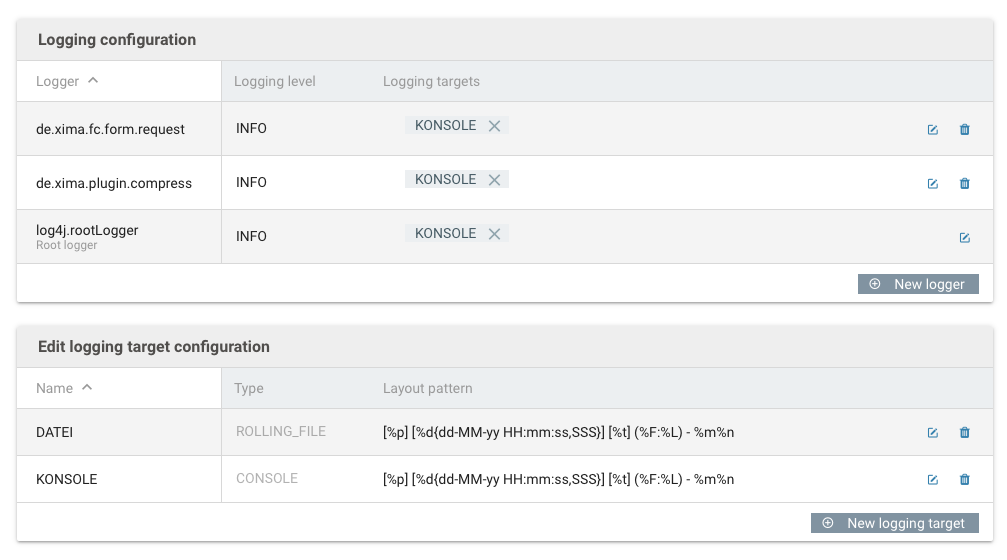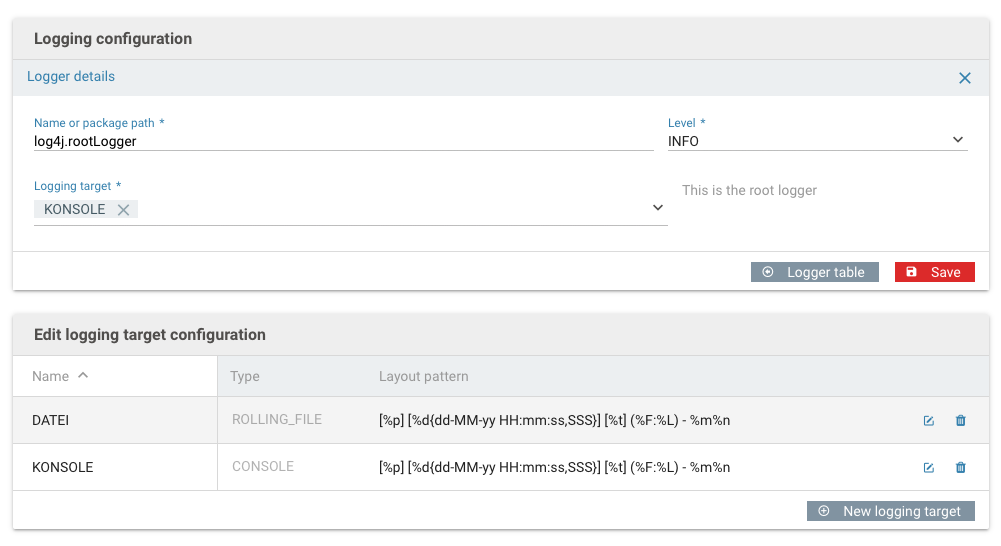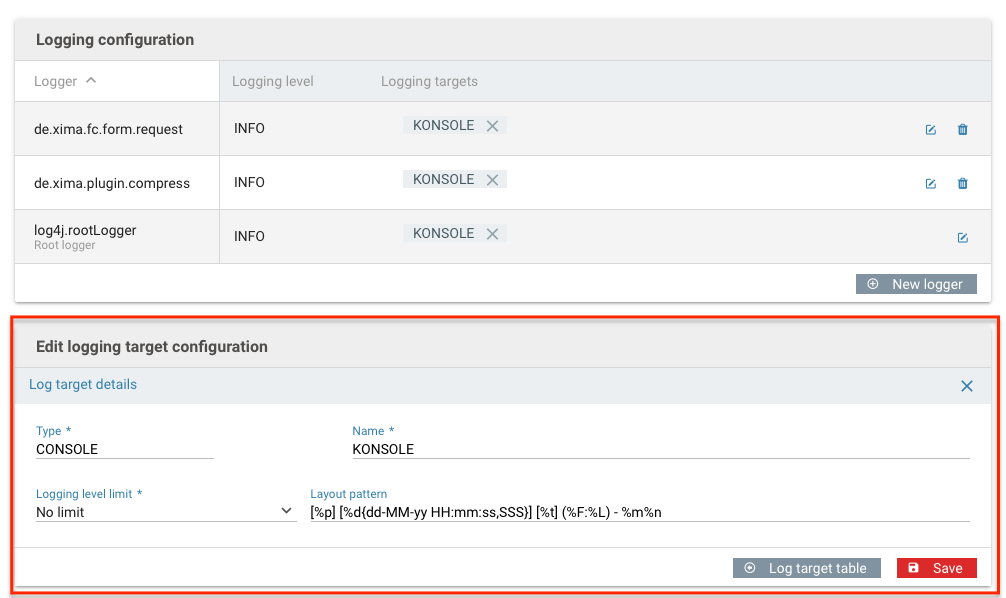Logging
This sections allows you to configure how and when events should be logged.
The logging settings can be modified even while the application is running, it does not need to be restarted.
When you want to run an error analysis, you can change the logging level or logging files temporarily
A logging configuration always consists of a logging configuration and a logging target.
For each logging configuration, you can set the desired logging level and which log messages you want to be included.
Setup a logging target to define where you want the log message to be written to (file or console). A logging targets also lets you change or configure how the log messages are formatted.
Setup
- Add new logger
- Adds a new logging configuration to the available logging configurations.
- Add new logging target configuration
- Adds a new logging target to the available logging targets.
- Edit
- Open the screen for editing the configuration of loggers or logging targets.
- Delete
- Deletes the selected logging configuration or target.
Logging configuration
- Name or path of package
- Defines the name of a class or Java package path whose output should be logged.
- Level
- The logging level. Available levels are, in order of increasing severity: ALL, DEBUG, INFO, WARN, ERROR, FATAL, OFF. When you select a certain severity level, all log messages with a higher severity are logged as well.
- Log output
- The logging target that should be used for this logger.
- Pass on log scope to root logger
- This allows you to pass on the log scope to the root logger. That is, the log messages will be logged by both this logger as well as the root logger.
Logging target
- Type
- The type of output. Available types are console (writes log messages to the console) and rolling file (writes log messages to a file).
- Name
- Unique name for this logging target. Two logging target cannot have the same name.
- Log level limit
- Sets a limit for the logging level of this logging target. Available limits are: No limit, DEBUG, INFO/, WARN, ERROR, FATAL
- Layout type
- Sets the format of the log output. Currently, only the so-called pattern layout is supported. The pattern currently in use is shown in the input field.
The following settings apply only to logging target of type rolling file.
- File
- Path to the log file.
- Maximum file size
- The maximum file size for an individual log file. When that size has been reached, a new log file will be created.
- Maximal number of backup files
- The maximum number of backup files that will be created. When this limit has been reached, the oldest backup file will be deleted.



